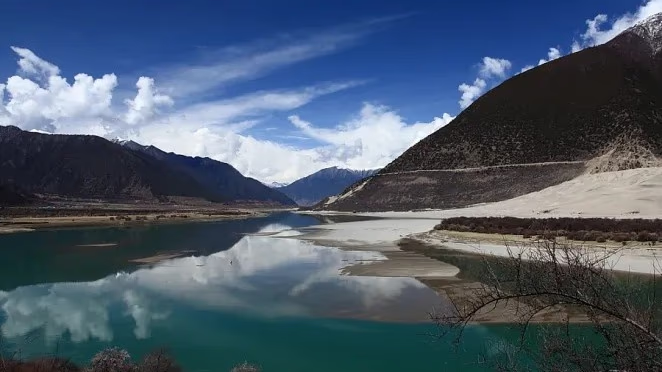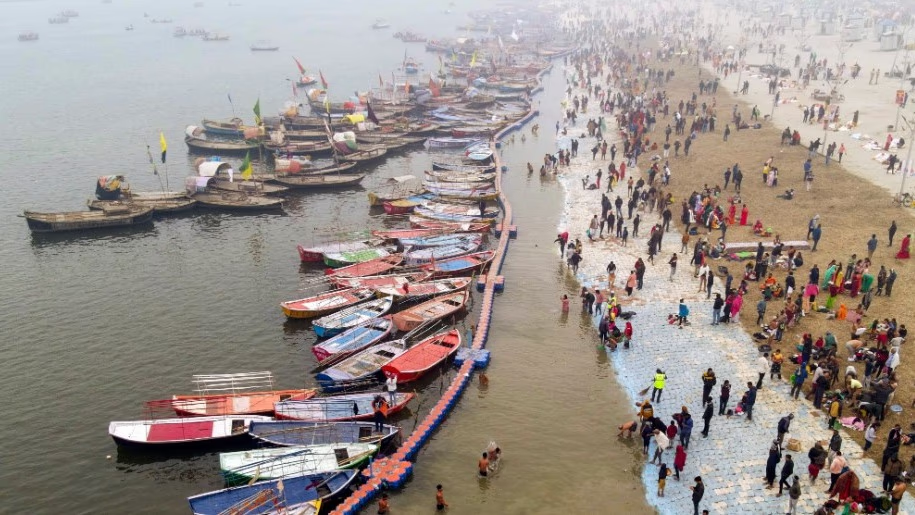The promises of agreement and cooperation between India and China might just be the most 'flexible.' Last year saw agreements between the two nations regarding patrols on the LAC. In October, a splendid meeting took place in Kazan, Russia, between PM Modi and Xi Jinping. The Indian Foreign Minister also made statements in Parliament about improving relations with China, followed by NSA Ajit Doval's visit to China. These events within a few months had given hope for overall improvement in relations between the two countries. Yet, once again, China has shattered these hopes, entangling the nations in accusations and heated exchanges.
The latest issue involves China creating two counties in Ladakh and planning to construct the world's largest dam on the Brahmaputra River. This preparation has further demonstrated that 'taking one step back and then moving two steps forward' is part of China's expansionist policy—a pattern seen repeatedly over decades.
Firstly, Let's Talk about Ladakh...
Recently, China announced the creation of two new counties in its Hotan region. Reports suggest that a portion of this area is in Ladakh. Criticizing China, India declared that such claims are utterly unacceptable and that it is Indian territory, rendering China’s claim completely illegal.
The second issue is linked to the Brahmaputra River, where China is gearing up to build a dam near Tibet, close to the Indian border. On December 25, China gave approval for this, touted as the world's largest dam with an expected expenditure of approximately $140 billion. India has also raised concerns over this preparation by China.
Yet, this is not the first instance of dispute over the Brahmaputra between India and China. Exchanges have occurred previously concerning this matter. Let’s delve deeper into how this river has become a source of ‘water war’ between the world's two most populous countries.
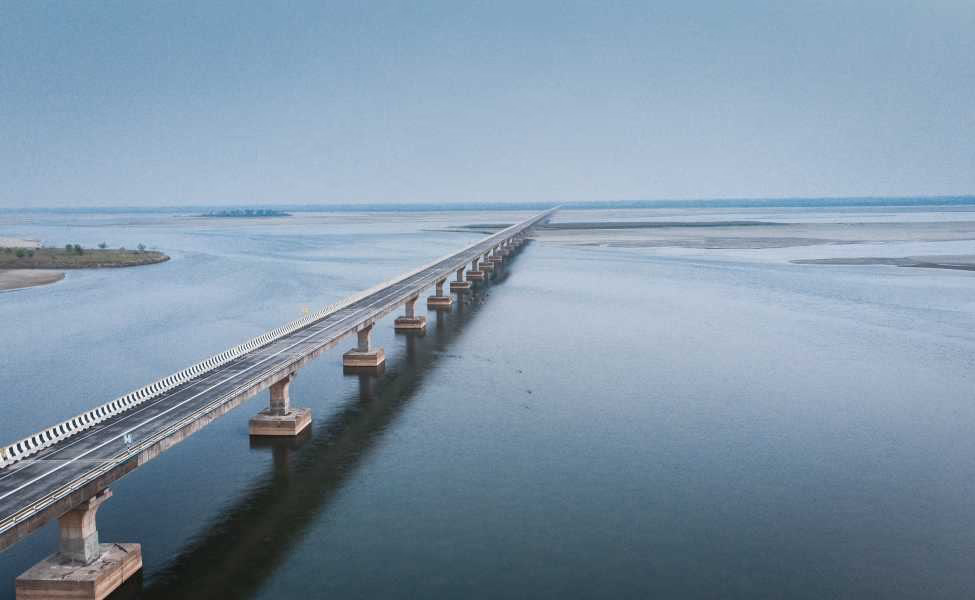
Source: aajtak
Understanding the Brahmaputra River
The Brahmaputra River originates from the Mansarovar Lake near Mount Kailash in Tibet and flows through Indian states like Arunachal Pradesh and Assam, eventually meeting Bangladesh before emptying into the Bay of Bengal. Known as Brahmaputra or Luit in Assam, Yarlung Tsangpo in Tibet, Siang/Dihang in Arunachali, and Jamuna in Bengali, it is the ninth-largest river globally by discharge and the fifteenth-longest river in the world.
Why the Brahmaputra River Matters
The Brahmaputra River is a boon for India, China, and Bangladesh, vital for irrigation and transportation. However, when Himalayan ice melts, it can cause flooding. Several tributaries merge into this river.
Affecting 37% of the World's Population
The Brahmaputra River flows through the world's two most populous nations—India and China—and joins Bangladesh. Compared globally, the 2900 km river affects 37% of the world's population, accounting for significant scrutiny over it. With discussions of a 'Water War' frequently arising, it mirrors disputes seen between Ethiopia and Egypt, Turkey and Iraq, much like the India-China tension over Brahmaputra.
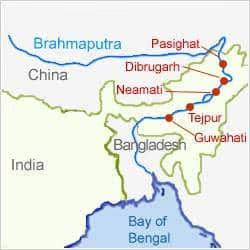
Source: aajtak
Population as the Primary Cause of Dispute
While India and China collectively account for 37% of the world's population, only about 11% of fresh water is shared between them. Increasing demands from pollution and industrialization have only exacerbated this imbalance.
One of the reasons for China's urgent need for water is that about 23 million of its population faces challenges in accessing clean drinking water. Many areas in China also grapple with power shortages, making hydroelectric projects an essential requirement. According to Chinese state data, about 60% of Chinese groundwater is polluted, acknowledged in their 12th Five-Year Plan as affecting the country's economic situation due to water resource shortages.
For India, rivers are like lifelines, closely connecting with its vast population. The Brahmaputra River, for instance, is a blessing for India's northeastern region, with reports suggesting it benefits nearly 27 million people in Assam alone. Culturally and mythologically significant, the river holds importance for power generation and fishing. From a strategic standpoint, the Brahmaputra is crucial for India.
Proportion of Brahmaputra in Various Countries
Speaking of the Brahmaputra, its total length is about 2900 km, with approximately 1700 km meandering through China and an estimated 916 km traversing through Indian boundaries before joining with the Teesta River, flowing into Bangladesh.
Understanding the Latest Dispute...
On December 25, China sanctioned the gigantic hydropower project on the Yarlung Tsangpo (Brahmaputra) River in Tibet. With a 60,000 MW capacity, this undertaking is three times larger than the Three Gorges Dam, the largest hydropower project globally, with India raising significant concerns.
Potential Loss for India
This project's construction could impact millions in India's northeastern regions, affecting their livelihoods and ecosystems. Environmentalists have previously raised concerns about China's attempts, and India has strongly opposed China's decision, with Assam's Chief Minister Himanta questioning it as well. It's argued that building such a large dam could adversely affect surrounding rivers, reducing water flow to India.
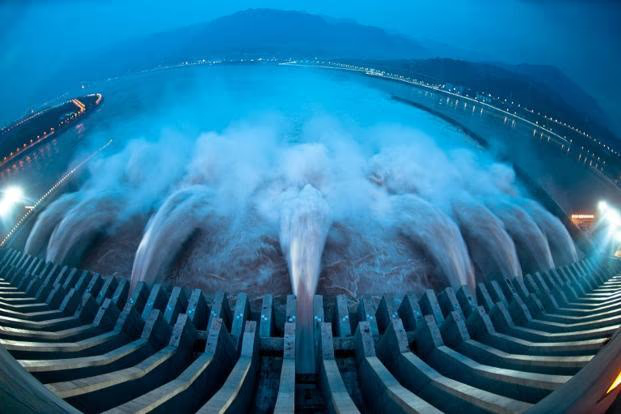
Source: aajtak
What is the Yarlung Tsangpo Project?
According to reports, this project was mentioned in China's 14th Five-Year Plan (2021-2025). It's located near the 'Great Bend,' where the river takes a significant U-turn in Medog County just before entering Arunachal Pradesh.
China's Claims About the Project
China claims that this project will help move away from traditional energy sources, aiding in their goal to achieve net carbon neutrality by 2060. They say the river's flow is ideal for such conditions.
How China Could Use It as a Weapon
Beyond hydroelectric usage, this dam could serve as a strategic weapon. In circumstances of rising tensions between the two nations, China could potentially release large water volumes, causing flood-like situations in neighboring Indian regions.
Learnings From Past Experiences...
The proposed dam on the Brahmaputra has raised numerous questions, including at the international level, with India voicing opposition. Historical records of China's previous experiments indicate that these concerns aren’t baseless. For instance, China's construction of the 'Three Gorges Dam' on the Yangtze River in Yiyang city, Hubei Province, impacted neighboring areas with serious environmental and societal effects, displacing over a million people and causing recurring earthquakes in the region. Similarly, the intended site for the Brahmaputra dam falls in a Himalayan region prone to seismic risks.
Dam Counts on the Brahmaputra
China has previously initiated several projects on the Brahmaputra or its tributaries. Starting with the Yamdrok Hydropower Station in 1998, followed by the Zhikong Hydropower Station in 2007, and various projects like Zangmu Dam in 2013 and 2015 and several more in 2019 and 2020. Over ten additional projects remain in proposal stages.
In contrast, India initiated the Subansiri Dam in Arunachal Pradesh, though work is currently suspended. In 2001, the Ranganadi Dam and the Rangit Dam in 2000 were constructed, while another project, the Dibang Dam, remains halted.

Source: aajtak

Source: aajtak

Source: aajtak

Source: aajtak
